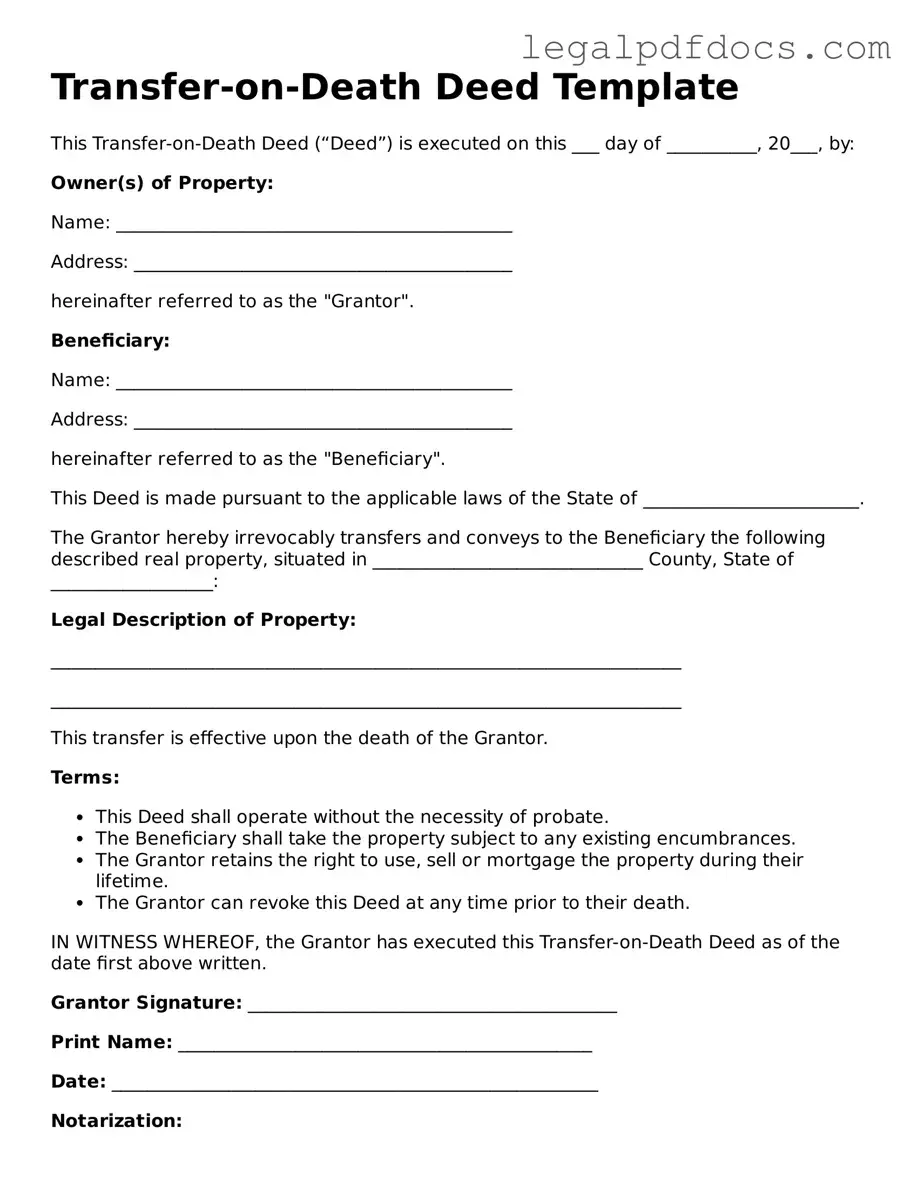Transfer-on-Death Deed Template
A Transfer-on-Death Deed is a legal document that allows an individual to designate a beneficiary to receive their property upon their death, bypassing the probate process. This form provides a straightforward method for transferring real estate, ensuring that the property goes directly to the intended heir without unnecessary delays or complications. To learn more about how to fill out the Transfer-on-Death Deed form, click the button below.
Open Transfer-on-Death Deed Editor Here
